The list, writes Danny Sjursen, includes the latest atrocity in northern Ethiopia – and the broader Horn of Africa chess game.

Street protest in Brussels, Dec. 1, 2020. (Rastakwere, CC BY-SA 4.0, Wikimedia Commons)
 There’s a whole mess of bloody messes around the world that few Americans care about. In fact, they could form a whole category of conflict labeled: “Top 10 Violent Hot Spots You’ve Never Heard Of (But Should Have).”
There’s a whole mess of bloody messes around the world that few Americans care about. In fact, they could form a whole category of conflict labeled: “Top 10 Violent Hot Spots You’ve Never Heard Of (But Should Have).”
The list might include, for starters, Nigeria’s resource war between herders and farmers (six times deadlier than the country’s well-publicized Boko Haram conflict in 2018); South Sudan’s dormant – for now – civil war (400,000 killed from 2013-18); and the Indo-Pakistani contest for Kashmir (70,000 dead in just the internal conflict over 30 years).
Recently, I wrote four columns about another prime candidate – the Armenian-Azerbaijani war for Nagorno-Karabakh that isn’t so likely to be thrown back in the ice box with the other “frozen conflicts” this time around.
Yet another top prospect for our list might best be branded “Ethiopia’s melange of maelstroms” – most recently personified by the month-long (and not quite finished) war between the federal government and the ethno-regional northern state of Tigray. Only Tigray ain’t the half of it – though the conflict does touch on most of the others.
Ethiopia is plagued by various internal ethno-religious squabbles; Somali separatism in its Ogaden region; ongoing military interventions in Somalia itself; an on-again, off-again war with Eritrea; and a brewing Nile River conflict with Egypt. Most Americans haven’t heard much about most of this — for a few reasons, often common to the other forgotten conflicts listed above.
Please Contribute to Consortium News
During its 2020 Winter Fund Drive
The formula for forgetting usually involves some combination of a lack of Westward-exportable natural (especially energy) resources, a less than clear connection to the post-9/11 war on terror, minimal ties to New Cold Wars with Russia or China, and/or the simple fact that the oppressor state or violent parties happen to be U.S. allies (like, say, the brutal Indian occupiers of Kashmir).
Once all, or even a couple, of these conditions are met: watch out victims! Because you’re apt to find out that not all lives matter to the world’s “indispensable nation” – or at least that some lives matter more than others.
Still, call him crazy but this author thinks there’s value in at least giving ethical consistency the old college try. And sure enough, once one bothers to care, peel a few odious onion layers off, and sniff out some backstory – he’s apt to find geostrategic connections and Washingtonian hands in the pot, amidst the no-lose game of six degrees to colonial obscenity. Which brings us to the latest atrocity in northern Ethiopia – and the broader Horn of Africa chess game.

U.S. soldiers training ain Djibouti, Nov. 11, 2017. They were assigned to Combined Joint Task Force Horn of Africa’s East African Response Force. (Air Force, Erin Piazza)
Backstory of a Tigrayan Tinderbox
These days it’s common for U.S. leaders to laud the partnership with what’s often described as the Ethiopian “linchpin” of security policy in East Africa. In a sense, Addis Ababa parallels New Delhi in the minds of that special breed of interventionist American “geo-strategists,” as a useful “balancer” in a tough neighborhood – India of China and Pakistani frenemies; Ethiopia of Somalia’s Al Shabaab group, and anything vaguely Islamist in East Africa.
However, not only hasn’t it always been so (especially in oft-contested Washington-Addis Ababa relations) – but in both cases there’s an equally strong argument that the partner in question is more basket case than balancer.
The recent war in Tigray is a case in point, and was eminently predictable – just like the bloody September flare up in Nagorno-Karabakh – for anyone who cared to follow such trouble zones. In fact, Ethiopia was No. 3 on the International Crisis Group’s list of the “10 Conflicts to Watch in 2020.”
The latest combat is now nearly 50 days running and so far thousands have been killed, with 50,000 external refugees, another 900,000 internally displaced, and the whole country on the precipice of widespread ethnic violence. That’s because Tigray was a tinderbox long before fighting broke out on Nov. 4 – as was the broader basket case of Ethiopia.
First, consider some illustrative surface stats. Ethiopia is big – twice the size of Texas. Its 108 million people are the second most in Africa, and make it the world’s most populous land-locked country – after Eritrea gained its contested independence, and Ethiopia thus lost access to the sea, in 1993.
Fully 60 percent of that population is under 25 years old. That’s never a good indicator, especially for a nation in which – despite real economic gains over the last two decades – per capita income still hovers around $2 a day.
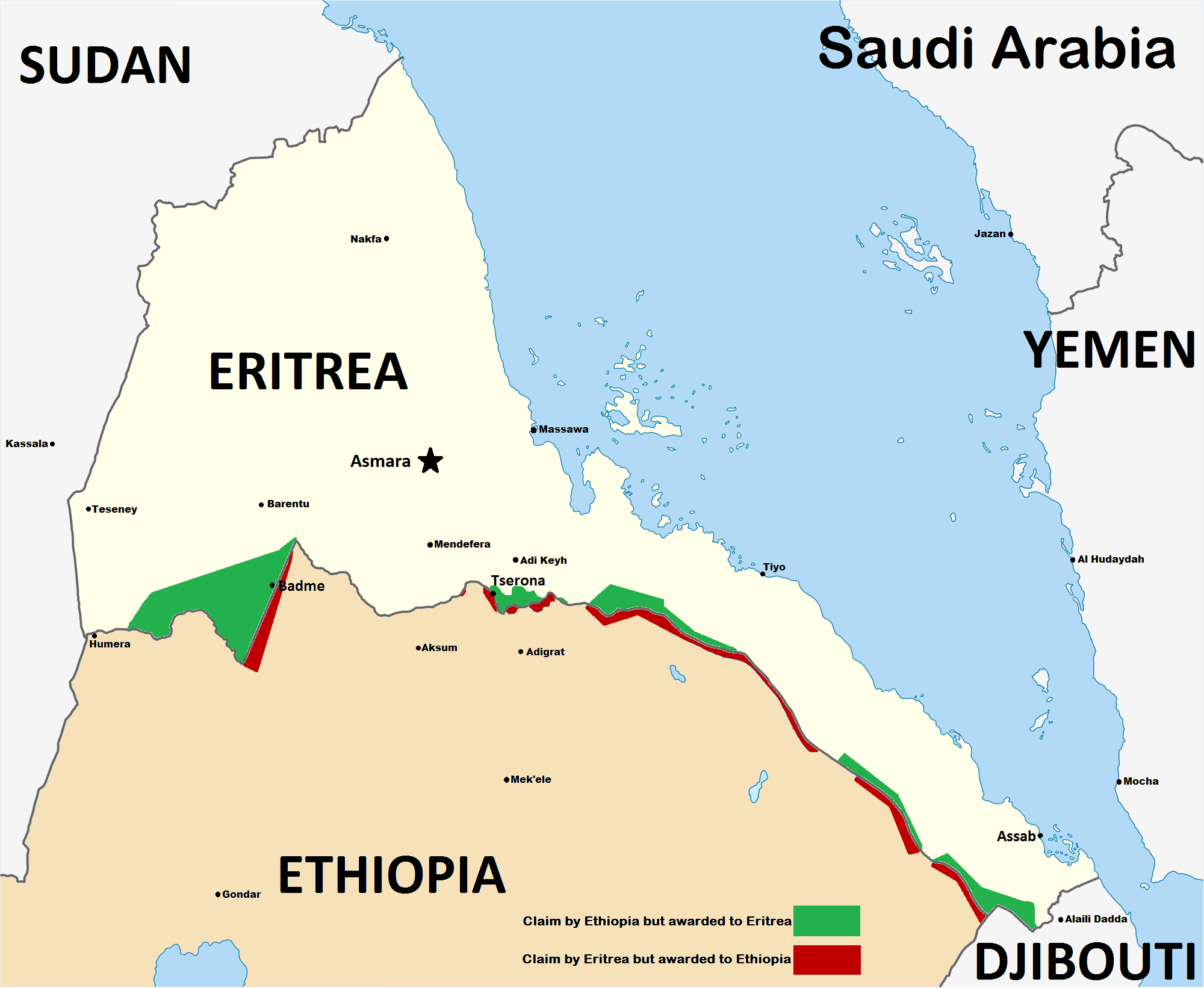
Eritrean–Ethiopian War map 1998. (Skilla1st, NordNordWest, CC BY-SA 3.0, Wikimedia Commons)
Worse still, Ethiopia has some 80 distinct ethnic groups divided into 10 separate, and theoretically self-governing, regional states within its borders and serious long-standing and re-brewing conflicts between several major factions.
Furthermore, while the Tigray only make up 6-to-7 percent of the populace, they previously had outsized power and influence – from the 1991 overthrow of the military dictatorship until the 2018 assumption of the current Western-favorite of Prime Minister (and Nobel Laureate) Abiy Ahmed. Abiy belongs to the Oromo ethnic group – Ethiopia’s largest (35 percent) – and sprung from the leadership of the Oromo Democratic Party (ODP) and vice presidency of the Oromia regional state.

UN soldiers monitoring Eritrea–Ethiopia boundary in 2005. (Dawit Rezene, CC BY-SA 1.0, Wikimedia Commons)
The prime minister’s mother is Christian but his deceased father was actually Muslim – in a country where 31 percent of the people in the world’s most religious country (according to Pew polling) are.
As for its place in a tense and troubled region: Ethiopia shares borders with four Muslim- (Sudan, Eritrea, Djibouti and Somalia) and two Christian-majority (Kenya and South Sudan) countries. So, throw in a bit of confessional kindling for future – and current – East African fires.
Despite all of that, Ethiopia’s latest and biggest problems – for the moment, at least – aren’t related to sectarian holy war or even the direct effects of persistent poverty, per se. Rather, they center on historic disagreements about two things: the degree of regionalism versus centralism in political power structures; and tensions between Ethiopian and sub-ethnic identities in the same power contests.
‘Ethnic Federalism’
The foundational label of Ethiopia’s politics for the last three decades almost sounds like an impossibility, a linguistic error. Yet according to some views, “ethnic federalism,” as it’s called – and solidified in the 1995 constitution – is the only way to make democracy (or even just functional governance) work in the country’s cultural cornucopia.
Others, however, are sure that only recentralization and nationalist prioritization – including a prime minister with big central plans and his foreign backers with vested interests in seeing such schemes through – can make Ethiopia great again! (Seriously, people essentially say it there – otherwise serious figures at that.)
So, how’d the debate get here, and how’s it played out in – and been influenced by – Ethiopia’s recent history? Here’s the shortest possible version:
Ethiopia was (according to their own tradition) ruled by an unbroken descendent line of 225 emperors, until the 1974 overthrow of the last, Haile Selassie – who, as a fascinating aside: many Rastafarians believe to have been a sort of second coming of Christ, and is accorded a key role in that African Diasporic religious movement founded in 1930s Jamaica. (Before assuming the throne, he was originally a prince “Ras,” and his given name was Tafari Makonnen.)
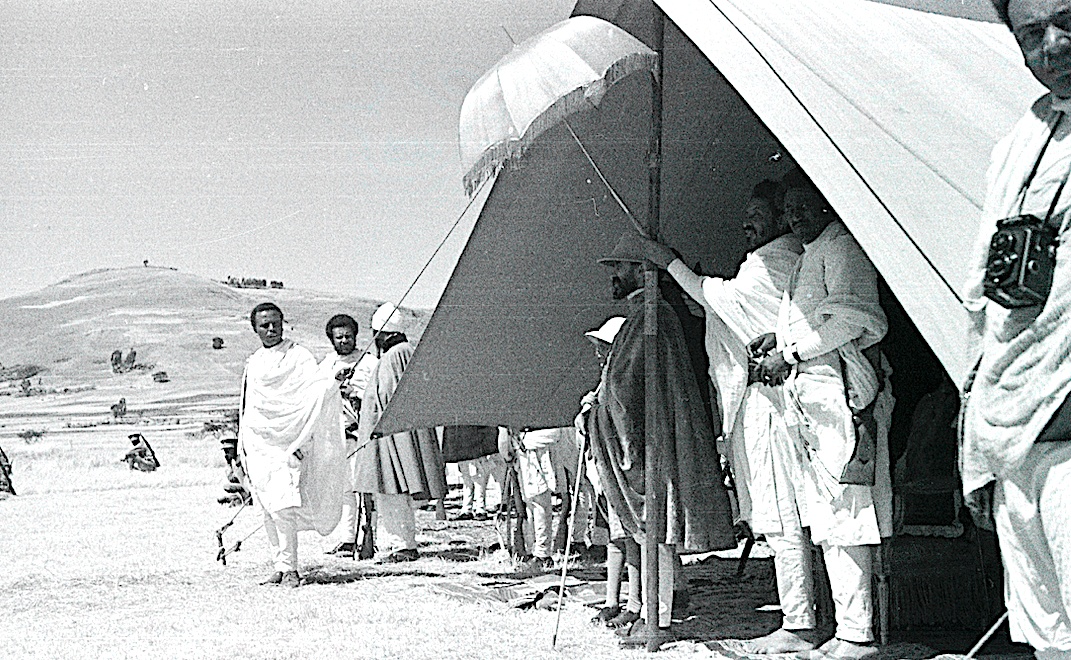
Haile Selassie in 1934. (Walter Mittelholzer, ETH-Bibliothek, Wikimedia Commons)
Selassie was replaced by the leftist and eventually Soviet-allied Derg regime. Both the emperor and the Derg ruled an oppressive and hyper-centralized state from Addis Ababa. Then, in 1991, a coalition of various ethno-political and regionally-linked insurgent militias overthrew the Derg.
Though but a small percentage of the overall population, the Tigrayans’ main faction – the Tigray People’s Liberation Front (TPLF) – played an outsized role in the war and became the major powerbroker in the coalition that ran the ethnic federalist Ethiopian state until 2018.
Of course, for all that devolved federalism talk, Ethiopia was ruled by party decree more than the democratic will of the people. In practice, there was plenty of centralization even in the long era of TPLF coalition-dominance.
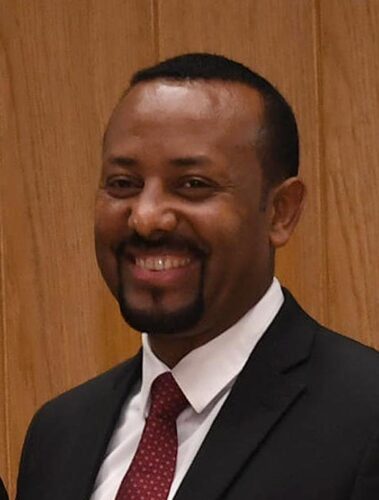
Ethiopian Prime Minister Abiy Ahmed in 2018. (Mark Neyman, CC BY-SA 3.0, Wikimedia Commons)
Current Prime Minister Abiy – the first non-Tigrayan head of government since 1991 –rose to power in 2018 after years of anti-government protests forced his predecessor to step down.
Since then, Tigray’s leaders complained that they were unfairly targeted in corruption prosecutions, and removed from top security and positions they once dominated.
Last year, the TPLF withdrew from the ruling coalition after Abiy merged it into the single, nationwide Prosperity Party.
Matters deteriorated further after Tigray held unilateral September elections in defiance of the Abiy government’s order postponing national polls due to the Covid-19 pandemic.
At that point, Addis Ababa and the Tigray regional government essentially quit recognizing the legitimacy of each other. Then the federal government slashed funding to the region – what the TPLF called “tantamount to an act of war.” Finally, on Nov. 4, in what Abiy said constituted crossing a “red line,” the TPLF attacked a federal military base in Tigray.
After that, the Nobel Peace Laureate – for making a vague and unofficial deal with Eritrea – basically declared war on the regional state and, well, the rest is history. There’ve been ethnic massacres on both sides, plenty of lying and obfuscating – a “nothing to see here” public relations strategy – from Addis Ababa, and Abiy’s new Eritrean buddies apparently even jumped the border with several brigades of troops to join the fight against their shared TPLF nemeses.
Abiy says the war is over; the TPLF claims they’re continuing the battle, and ethnic-based arrests and killings are on the rise nationwide – not just in Tigray. It’s a real mess, and until Dec. 14 the United Nations Security Council hardly even addressed it. Meanwhile most Americans can’t be bothered.
Yet, oft-forgotten is this teensy inconvenient fact: part of the reason Ethiopia grapples with such ethnic challenges – and considers ethnic federalism an option – is because the country has its own imperial legacy. It was long, and largely remains, a conquering African empire.
It’s a common trope among diplomats — and politicians or analysts who wish to signal that they’re vaguely informed — to refer to Ethiopia as the only African nation not to be colonized (or more accurately, one of two — if one includes the American quasi-protectorate of Liberia). This obligatory internationalists’ verbal tic-pronouncement is at once both strictly true and totally misleading.
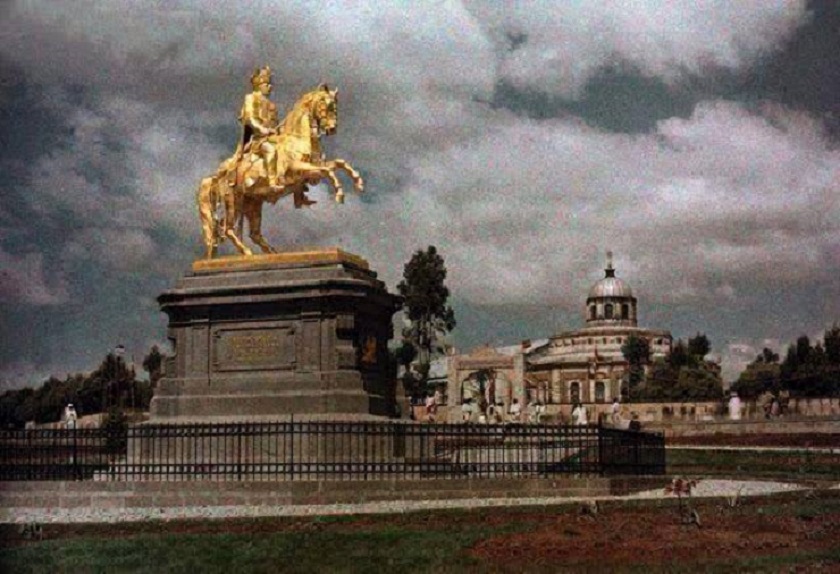
Monument commemorating the victory of the Ethiopians in Battle of Adwa, dedicated to Menelik II, emperor of Ethiopia, on March 1, 1896. (Wikimedia Commons)
Yes, Ethiopia was never — with the brief and late-stage imperial exception of occupation by Mussolini’s fascist Italy in the second half of the 1930s — overtly colonized by a Western power when pretty much every inch Africa eventually was gobbled up between 1870 and 1920. But that’s, in part, because it was already a multiethnic Ethiopian Empire among powerful European empires.
It wasn’t even an “if you can’t beat ‘em, join ‘em” scenario, exactly. Ethiopia had been in on the African imperial conquest game for quite some time. That’s why there’s still so many Somalis living under Addis Ababa’s wing a century and a half after Europe’s “Scramble for Africa” began.
After all, in Africa, one — and the most common — way to end up with 80 ethnicities inside your state, is for Western imperialists to have arbitrarily drawn up your artificial national borders circa 1919 (plus or minus 25 years). Another, though — call it the Ethiopian model — was to gobble up a whole bunch of territories and the ethno-linguistically diverse fellow African peoples living in them over a prolonged period.
And, that Ethiopia was — and certainly presented itself — as a rather ancient Christian imperium, didn’t hurt its survival prospects with European powers committed to the justifying veneer of a civilizing mission, and just loaded with scholarly Orientalists and early Church-enthusiast antiquarians.
Heck, even today, many Ethiopian Christians (and the Ethiopian Orthodox Church) claim that the actual Ark of the Covenant described in Old Testament Judeo-Christian tradition sits in a chapel — no one is allowed to see it, of course — in the small town of Aksum, in the country’s northern highlands. Tigrayan northern highlands, to be exact.
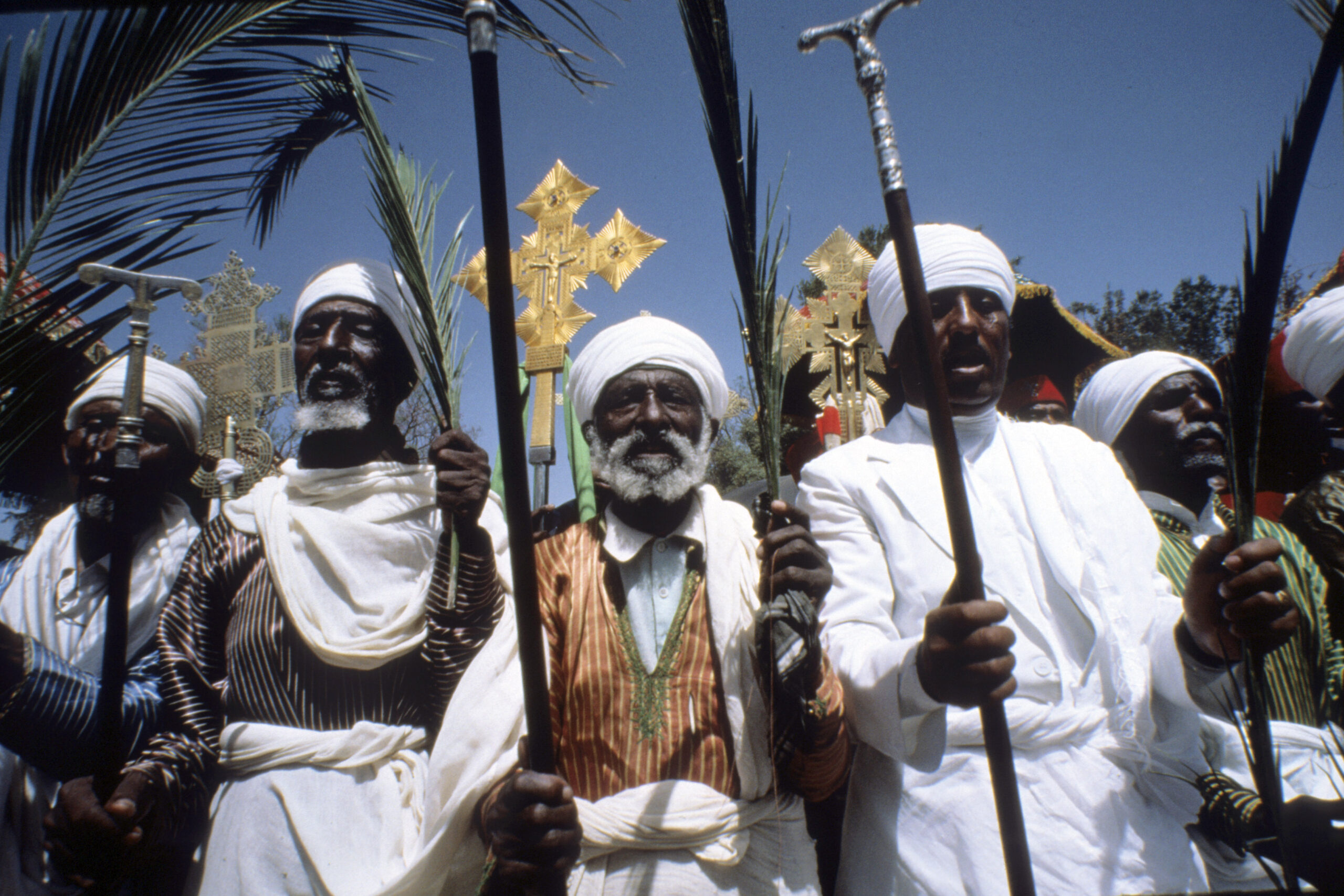
Ethiopian Orthodox priests holding a procession in Lalibela, a high place of Ethiopian Christianity and still today a place of pilgrimage and devotion. (Anne Saurat, UNESCO, CC BY-SA 3.0, Wikimedia Commons)
Once one is even cursorily aware of all this backstory, the recent Tigray War looks a bit different. On one hand, what’s unfolded seems to make more sense. Yet on the other, a whole new range of complexities, challenges, and contradictions reveal themselves. All of which is to say — it’s complicated. There’re lots of players, interests, and tensions at work in Tigray and in Ethiopia as a whole.
Still, it’s worth reviewing my original hypothesized list of reasons a conflict like Tigray’s typically goes unnoticed. Well, Ethiopia doesn’t, in fact, export much that’s typically coveted by tech-driven Western states — less natural gas or oil, and more coffee and oil seeds.
However, the country does have strong perceived ties — if once removed — to both the war on terror (through its interventions in the Somali theater) and New Cold War (especially as China invests in Addis Ababa infrastructure projects and injects some naval presence in the Red Sea.
Still, the main reason Ethiopia gets more than its fair share of free human-rights-violation passes, is that it happens — at least for the fleeting now — to be seen as a useful partner and/or proxy for Washington’s aspirations and machinations in a key sub region of its new favorite military playground…Africa.
Make no mistake: while the U.S. doesn’t and can’t possibly pull all the levers, nor predict all that’s coming down the conflict pipes — there are American hands at work in East Africa. That what they tend to craft is diplomatic top cover, international apologia, and security assistance — well, that often puts the region’s residents on the horns of an African dilemma on Africa’s Horn.
Because as it turns out America’s newest regional command (since 2007), U.S. AFRICOM – has almost nothing to do with the well-being of average Africans.
Danny Sjursen is a retired U.S. Army officer and contributing editor at antiwar.com. His work has appeared in the LA Times, The Nation, Huff Post, The Hill, Salon, Truthdig, Tom Dispatch, among other publications. He served combat tours with reconnaissance units in Iraq and Afghanistan and later taught history at his alma mater, West Point. He is the author of a memoir and critical analysis of the Iraq War, Ghostriders of Baghdad: Soldiers, Civilians, and the Myth of the Surge. His latest book is Patriotic Dissent: America in the Age of Endless War. Follow him on Twitter at @SkepticalVet. Check out his professional website for contact info, scheduling speeches, and/or access to the full corpus of his writing and media appearances.
This article is from AntiWar.com
The views expressed are solely those of the author and may or may not reflect those of Consortium News.
Please Contribute to Consortium News
During its 2020 Winter Fund Drive

Spent two years in Ethiopia in the sixties with the Peace Corps. It was the largest or second largest contingent of volunteers anywhere. Then, it was apparent that the Tigrays, possibly the most advanced tribe, bore deep resentment against the Emperor, mostly Oromo or Galla blood. The latter term was used then, at least among the many I knew. The resentment arose at least in part from the virtual exclusion of Tigrays from important posts in the government. From Menelik, whose queen was a Tigray and where Tigrays were highly influential, to far different treatment by Haile Selassie.
Haile Selassie was always a favorite among Americans because of his stand, however futile. against the Italians in 1936, I think that is the year. He carried that favoritism right up to the end. Although spending more on military aid to Ethiopia than in any other African country, we seemed ill-prepared when the Derg emerged.
When the Derg entered the picture, all hell broke loose and all the resentments built up over the years came to the surface and it seems to have no end.
I too appreciate this information. I felt a strong need to understand, since I did notice increasing urgency and activity as you note since “Africom”. But I knew it would take a lot of work and I have only so much time and energy. Thank you.
Thanks to Danny fo a complicated picture of a region we rarely hear of except when the Nobel Peace Prize was won by the leader there!
As someone who studied sub-Saharan Africa in my student days, and has tried to keep up since, all I have to say is…wow. Bravo, Danny Sjursen, and thank you for filling a giant hole in my comprehension of what is going on in east Africa.